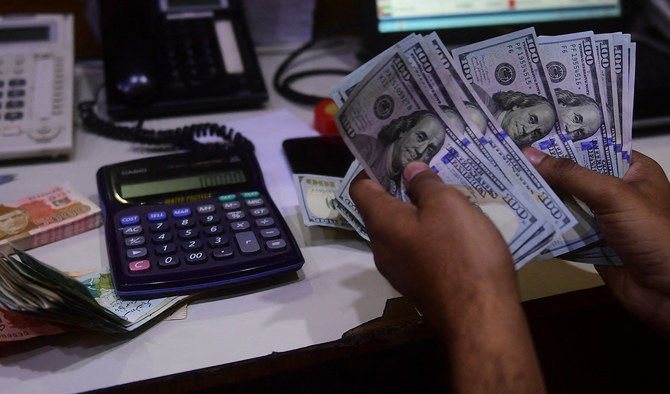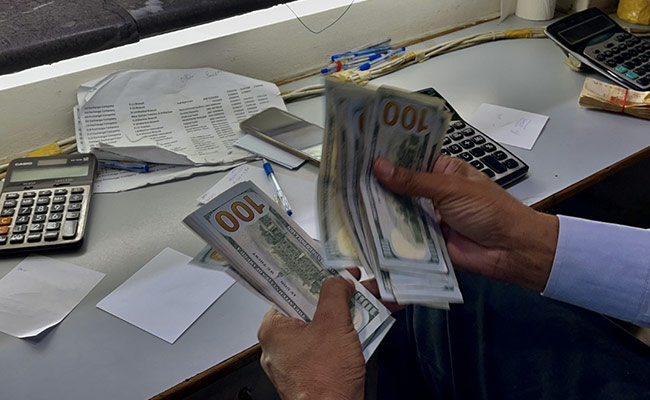Pakistani Rupee Plummets to Unprecedented Depths Against the US Dollar Amidst Political Turmoil

Pakistani Rupee Plummets to Unprecedented Depths Against the US Dollar Amidst Political Turmoil
In a disheartening turn of events, the Pakistani rupee has been dealt a severe blow, hitting an unprecedented record low against the US dollar. The currency’s value, which is a barometer of a nation’s economic health, has been on a downward spiral, causing concern among citizens, businesses, and policymakers alike. As the rupee’s value tumbled by 0.6%, reaching an intraday low of 299 against the US dollar, the magnitude of the situation cannot be understated.
This recent plunge follows closely on the heels of another significant milestone – a record closing low of 298.93 on May 11. The timing of this decline is especially noteworthy, aligning with the arrest of former prime minister Imran Khan on charges of corruption just two days earlier. This event dealt a severe blow to the already fragile political landscape, sending shockwaves through the nation’s economic foundation.
Traders and analysts have been grappling to make sense of these developments and their cascading impact. The volatility in the currency market, which was already prone to fluctuations, has been exacerbated by this recent turmoil. The challenges faced by the Pakistani economy are multifaceted and interconnected, encompassing both domestic and international factors.

Political stability is a cornerstone of economic prosperity, and the arrest of a prominent political figure like Imran Khan has injected a fresh dose of uncertainty into the equation. The allegations of graft against Khan have not only divided public opinion but have also cast a cloud of doubt over the country’s governance. Foreign investors and financial institutions tend to shy away from markets marred by political turmoil, causing ripples that can be felt across multiple sectors of the economy.
The consequences of this currency freefall are vast and encompassing. A weakened rupee translates to higher import costs, which inevitably leads to rising prices of essential commodities. This surge in inflation disproportionately affects the common citizens, whose purchasing power erodes as their hard-earned money loses value. The cost of living surges, pushing already struggling households closer to the brink.
Furthermore, businesses that rely on imported raw materials or finished products find themselves in a bind. The higher costs eat into profit margins, potentially leading to layoffs and downsizing. The manufacturing sector, which forms the backbone of any robust economy, can face disruptions due to the increased cost of production. This can have a ripple effect on job creation, exacerbating the unemployment rate and subsequently dampening consumer spending.

The external debt situation of Pakistan is another pressing concern. With the rupee’s depreciation, the burden of foreign debt escalates, as more local currency is needed to fulfill repayment obligations. This can potentially lead to a vicious cycle – as the debt burden increases, the government might resort to borrowing even more to meet its obligations, further fueling the debt crisis.
The State Bank of Pakistan, the country’s central bank, finds itself at a crossroads. While it has attempted to intervene in the foreign exchange market to stabilize the rupee, these measures have had limited success. Foreign exchange reserves, which act as a cushion during turbulent times, have been dwindling, limiting the central bank’s ability to implement effective interventions. This calls for a multi-pronged approach that involves not only currency market interventions but also broader economic reforms to restore investor confidence and attract foreign inflows.
Amidst these challenges, there is a glimmer of hope in the form of potential solutions. The government must prioritize political stability and sound governance to restore confidence in the country’s leadership. Strengthening institutional frameworks to root out corruption and ensure transparency is paramount. Additionally, diversifying the economy and reducing dependence on imports can help alleviate the strain caused by a weak rupee.
)
International cooperation also plays a crucial role. Engaging with international financial institutions and friendly nations to secure aid packages or investment deals can provide a much-needed boost to the economy. Such collaborations can help alleviate short-term pressures and provide breathing space to implement long-term structural reforms.
In conclusion, the Pakistani rupee’s record low against the US dollar paints a grim picture of the nation’s economic challenges. The intertwined issues of political turmoil, currency depreciation, inflation, and rising debt have created a complex web that demands careful and strategic solutions. The path to recovery will be arduous, requiring collaboration between the government, central bank, private sector, and international partners. However, with concerted efforts and a commitment to reform, Pakistan can navigate these troubled waters and chart a course toward a more stable and prosperous future.




